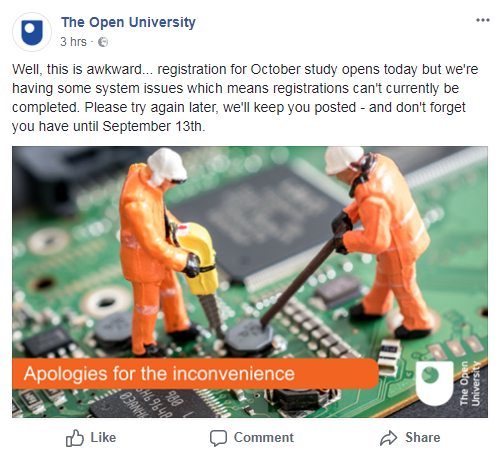Since TM257 is kind of a non-module, a non-review seems appropriate. And the great thing for me is that a non-review seems like it should be rather quick to not write.
As stated many places, the content for TM257 comes from Cisco’s NetAcad course environment. It comprises NetAcad courses for CCNA R&S: Introduction to Networks and CCNA R&S: Routing and Switching Essentials. You read very, very dry web pages that are like a Flash website-book, check understanding through a variety of drag-and-drop exercises, a very poor syntax checker, and a very awesome virtual network lab called Packet Tracer. (Okay, so the UI for Packet Tracer needs some remedial attention, but its functionality is excellent.) There are glossary flash cards, quizzes, and chapter exams after each portion, and a “final” exam for each of the two constituent courses; one is taken at home, and one is taken at the day school when there isn’t a global pandemic.
NetAcad has all this as a lovely pre-packaged unit, and though dry, it’s very good. The pacing, the knowledge, the checking, the repeating, the practising … It’s a great package. But for it to be an Open University module, it needs more.
It needs learning outcomes. It needs summative assessment. It needs TMAs. And frankly, I’m not very keen on TM257 in this department. The learning outcomes aren’t what NetAcad designed their module to provide, but rather a combination of what it’s observed to provide, and to a degree what it’s hoped to provide. The module team has made it very difficult to compare notes, but it seems that the evaluation fit so poorly this year that possibly nobody scored a distinction-level percentage on one of the EMA questions, and possibly only a couple of people even scored above 70% on it. Which is more or less fine, but it’s less fine when the items being evaluated must have been informed by what was taught by someone else. Either the learning outcome doesn’t match the materials, or the evaluation doesn’t match the learning outcomes. Because it seems a fair stretch to think that the materials did teach what was in the learning outcomes, the learning outcomes were appropriately evaluated, and nobody lucked into a distinction-level answer. Especially when you consider how many certified industry practitioners were on the module.
I mean, I’m not a conspiracy theorist, but I’m beginning to guess why it might be that we can’t get straight answers about how people did on that question.
Anyway, that aside, I suspect we’ll see similar numbers of people with distinctions this year as we did last year, and that seems to fit more or less with other Stage 2 modules. So, over all, in the broad view, it feels like the evaluation is in the right ball park.
So that’s kind of my evaluation of the module, too. It’s got dry materials, great information, and evaluation that’s more or less fine.
